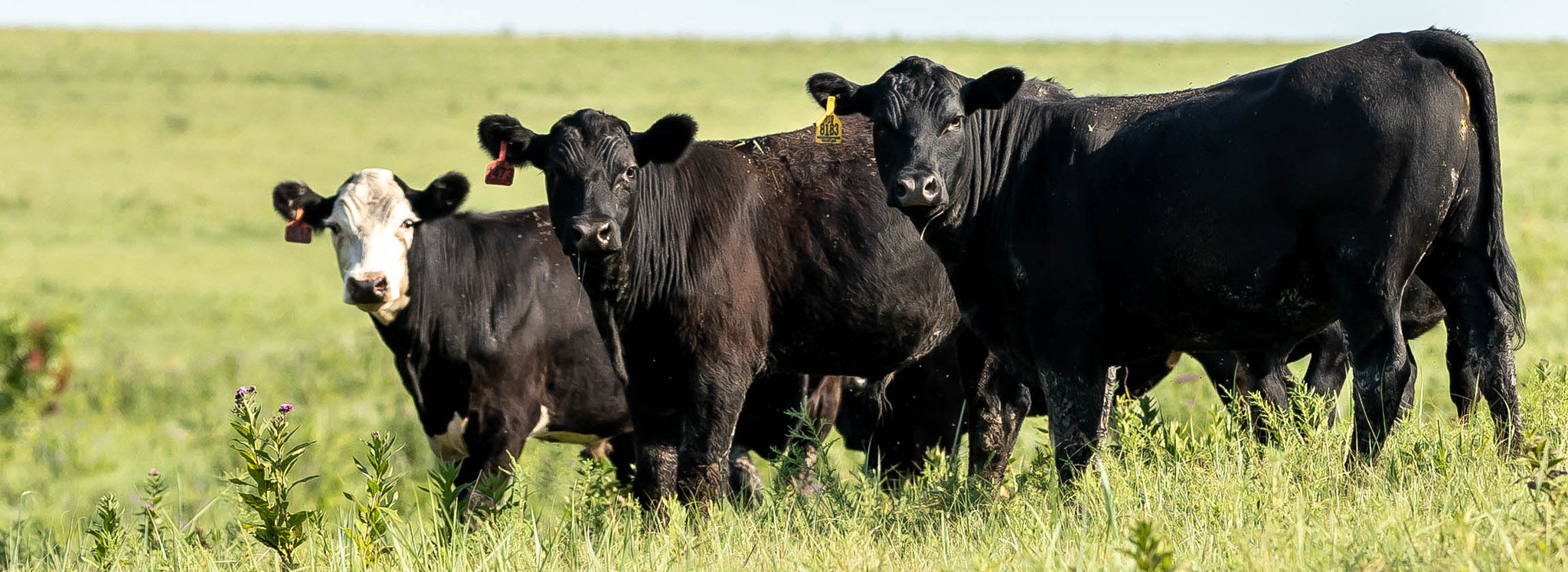
Producers initially identify cattle infected with pink eye by their watery eyes, says K-State veterinarian Gregg Hanzlicek. | Download photo
Prevent pink eye through autogenous vaccines
K-State veterinarian discusses a novel preventative approach to control pink eye
At a glance: K-State veterinarian Gregg Hanzlicek outlines how to prevent a known disease to cattle production: pink eye. Hanzlicek shares common situations cattle face conducive to pink eye infections.
More information: Gregg Hanzlicek, 785-532-4853, gahanz@vet.k-state.edu
Related: Pinkeye Infectious Bovine Keratoconjunctivitis
June 21, 2024
By Jacob Klaudt, K-State Research and Extension news service
MANHATTAN, Kan. – A Kansas State University veterinarian says that personalized prevention programs for pink eye, an acute eye disease affecting cattle of all ages, are proving to be "very, very effective" for suppressing infections.
“Currently, there is a big move to autogenous and prescription vaccines because there are many strains of these pink-eye-causing bacteria out there,” veterinarian Gregg Hanzlicek said. “Sometimes, there is not good cross-protection from commercial vaccines.”
Commercial vaccines have been available to ward off pinkeye for a long time. A recent push towards personalized programs that use farm-specific bacteria could lead to fewer outbreaks, according to Hanzlicek.
“An autogenous, or prescription, vaccine is where a veterinarian collects eye swabs from affected animals, and the bacteria found are sent to a lab where they grow that bacteria colony,” he said. “Then a specific vaccine is created using the organisms on that ranch. There are a lot of field reports where these products seem to be very, very effective.”
The four main pink eye-causing bacteria include Mycoplasma bovis, Mycoplasma bovoculi, Moraxella bovis and Moraxella bovoculi.
“We can swab healthy eyes and eyes with pink eye, and we are going to find the same bacteria,” he said. “To have a pink eye case, something must break the integrity of the cornea. That allows those bacteria to enter the underlying layers of the eye, and that is when the infection starts.”
Producers must remain vigilant of eye injuries within their cowherd to avoid an escalation of the infection, according to Hanzlicek.
“At first, you will see runny eyes. Infected cattle are also sensitive to light, so they will hold their eyes shut,” he said. "As the disease progresses, an ulcer (crater) can develop in the cornea. If the infection persists, that crater can become deeper and deeper until things in the eye – like the iris and the lens – start falling out or prolapsing, and then the eye’s shape will change. Vision never returns at that point.”
He added: “It can go from mild to severe within 2-3 days. The earlier (the infection in) these animals is caught, the more likely we will save the eye.”
Certain pests, harsh climates and how cattle consume feed can impair their eyes and ultimately lead to pink eye, Hanzlicek said.
“Face flies and house flies feed on the juices around the eye,” he said. “Their raspy mouth parts are very coarse and can lacerate the eye. Times of drought like we have had in the past few years create large amounts of dust that can get in the eye and damage it.”
“Later in the grazing season when the grass starts heading out, the calves and cows try to graze closer to the ground. They must go through those rough seed heads to find the more palatable grass, which can cut the eye. We also see it when bunk feeding dry total mixed rations. If there is enough of it, the hay dust – especially in alfalfa – can get into the eyes and cause a pink eye outbreak.”
Hanzlicek advises producers to consult a local veterinarian to determine the best pink eye prevention method for them.
***

K‑State Research and Extension is a short name for the Kansas State University Agricultural Experiment Station and Cooperative Extension Service, a program designed to generate and distribute useful knowledge for the well‑being of Kansans. Supported by county, state, federal and private funds, the program has county extension offices, experiment fields, area extension offices and regional research centers statewide. Its headquarters is on the K‑State campus in Manhattan. For more information, visit www.ksre.ksu.edu. K-State Research and Extension is an equal opportunity provider and employer.